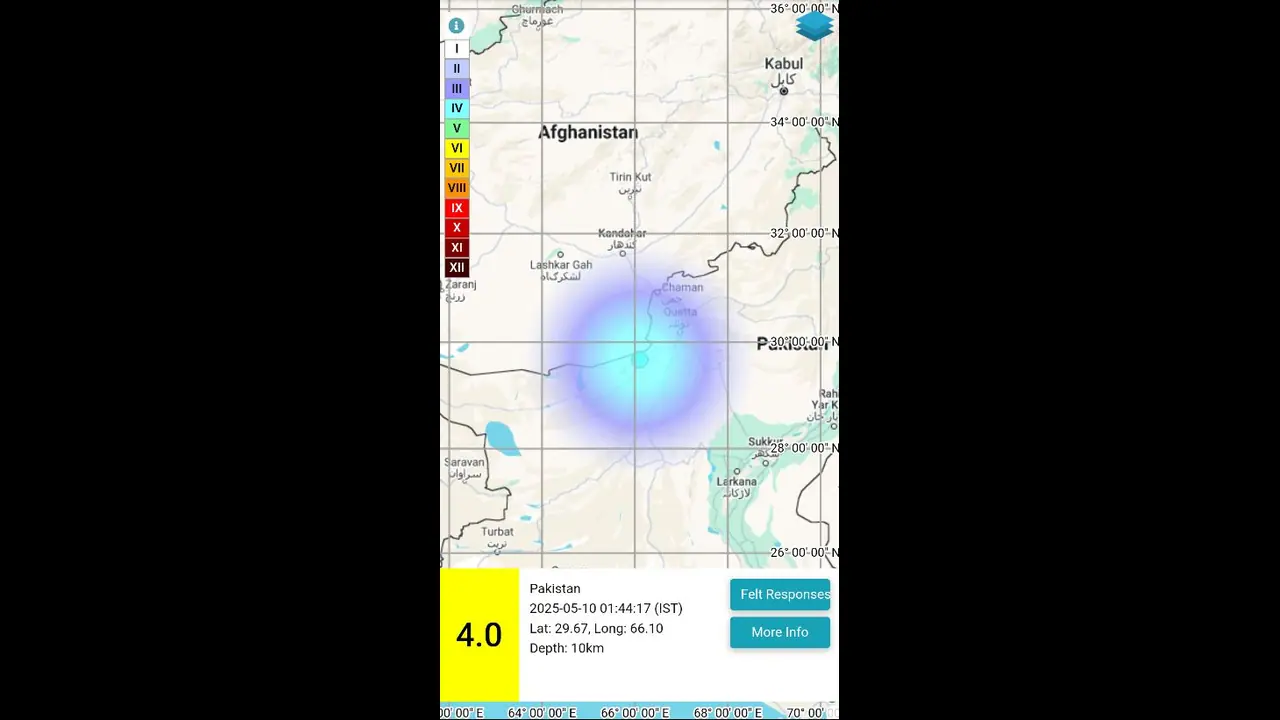An earthquake of magnitude 4.0 on the Richter Scale jolted Pakistan on Saturday, a statement by the National Center for Seismology (NCS) said.
An earthquake of magnitude 4.0 on the Richter Scale jolted Pakistan on Saturday, a statement by the National Center for Seismology (NCS) said.

As per the NCS, the earthquake occurred at a shallow depth of 10km, making it susceptible to aftershocks.
In a post on X, the NCS said, "EQ of M: 4.0, On: 10/05/2025 01:44:17 IST, Lat: 29.67 N, Long: 66.10 E, Depth: 10 Km, Location: Pakistan."
<br>Shallow earthquakes are generally more dangerous than deep earthquakes. This is because the seismic waves from shallow earthquakes have a shorter distance to travel to the surface, resulting in stronger ground shaking and potentially more damage to structures and greater casualties.</p><p><img src="https://static-gi.asianetnews.com/images/01jtw6qn8dvt84q27w9angwms8/whatsapp-image-2025-05-10-at-2.14.46-am-1746850796813.jpeg"></p><div type="dfp" position=3>Ad3</div><p>Pakistan is highly susceptible to earthquakes. Its location straddling the Eurasian and Indian tectonic plates, coupled with its proximity to numerous major fault lines, makes it a seismically active region. This geological setting contributes to the frequent occurrence and destructive nature of earthquakes in Pakistan. </p><p>Pakistan lies on the boundary between the Eurasian and Indian tectonic plates, where they collide. This collision zone is known for generating significant seismic activity, including earthquakes. </p><p>The country is crossed by several major fault lines, further increasing its vulnerability to earthquakes. </p><div type="dfp" position=4>Ad4</div><p>Pakistan is considered a seismically active region, with earthquakes occurring frequently and sometimes with considerable destructive power.</p><p>Pakistan is one of the most seismically active countries in the world, being crossed by several major faults. As a result, earthquakes in Pakistan occur often and are destructive.</p><p>Pakistan geologically overlaps both the Eurasian and Indian tectonic plates. Balochistan, the Federally Administered Tribal Areas, Khyber Pakhtunkhwa and Gilgit-Baltistan provinces lie on the southern edge of the Eurasian plate on the Iranian Plateau. Sindh, Punjab and Pakistan-occupied Jammu and Kashmir provinces lie on the north-western edge of the Indian plate in South Asia. Hence this region is prone to violent earthquakes, as the two tectonic plates collide. </p>


